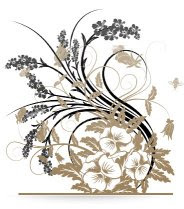On Mondays and Thursdays, I check out The Seraph Inn to see if Sara Ellerton has posted another few pages of The Phoenix Requiem.
Monday through Friday, I hop on over to Wapsi Square for the webcomic equivalent of paranormal chick lit.
Then I pop over to Real Life, which is still funny after many years. I've since abandoned all of its video game webcomicy cohorts from years ago since they started to read like newspaper funnies - i.e. not funny at all.
Well, except for Penny Arcade, which isn't a daily. It's there MWF for me. However, the real treat isn't necessarily the comic there, it's the commentary. Tycho never ceases to provide pithy verbiage relevant to the topic of the day.
MWF also brings a new page of Candi, which is probably the most accurate "college slice of life" comic for undergrads. Its graduate school partner is PhD. Although I haven't gone to graduate school yet, I'm married to a doctor (and dated him during the 8 years he was in his doctorate program), and he can vouch for the authenticity of the latter.
Fey Winds only updates on occasional Tuesdays. It provides "farcical fantasy" to match the more serious fantasy of The Dreamland Chronicles, which is there most Mondays-Fridays. However, the Scott Christian Sava has managed to get his project turned into a movie (an amazing feat, even if he already was in the industry) and the updates have occasionally drizzled down to MWF in the last few months.
Rounding it off is the Monday-Sunday - yes, seven days a week - heretical viewpoint on religion that is Sinfest. Its polar opposite in art (aside from being in black and white) but its kindred spirit, XKCD, is there MWF.
The webcomics I read range from stick figures to beautiful CGI renders in full color. Some of the art is great, like Sara Ellerton's beautiful paintings (if I ever have any spare cash, I'm commissioning artwork from her). Some of it is cartoony, some of it doesn't even try.
What do they all have in common?
Superb writing. Of course. The best webcomics endure because of the writing, not because of the art.
